Do you ever feel like you should be going faster? Horsepower is a major factor, of course, but it is only part of the equation. The way a vehicle “feels†going through a corner is a product of your chassis setup. Sometimes what feels good can actually make you slower, so how do you make the right changes?
Most of the time when we think about going faster we think about more horsepower. We think that increasing the acceleration sensation when we put the “pedal to the metal†will result in lower lap times. While that is true, it is but one factor in the overall equation. Even a car developed for drag racing must be concerned with how it’s going to transmit all of its horsepower to the ground. A drag racing vehicle doesn’t have to worry about left and right hand turns (unless something has gone very wrong!), but the combination of tire technology and chassis set up will determine how much horsepower gets put to good use and how much is wasted.
If you’re involved in any sort of track motorsport, anything from solo racing at your car club event to SCCA pro-racing, setting up the steering and suspension of your vehicle to match track conditions is a major factor in reducing your lap times, and in any form of racing that includes curves reducing your lap times is what it’s all about. You may think you need special equipment to make these changes, and some of the tools we’ll talk about here will make the job easier, but a basic understanding of the principles should allow you to make “seat of the pants†changes that will improve your overall performance.
The most important factor involved in putting horsepower on the ground is your tires. They are the only components on the car that are actually in contact with the road (if things are going well) and your available traction is what is going to allow you to go in the direction you want to go in. An entire article can and will be written about the tires you choose, but that is for another day and another time. For the moment, we are only going to concern ourselves with the tires and the race car you already have. In future installments, we’ll go over chassis development and structural design changes in the particular field of racing you are in. We are going to address general principles and outline how changes to one part of the car affect others. Keep in mind chassis dynamics are just that, dynamic. As a vehicle is braking, going into a turn, and accelerating out of one the chassis dynamics are changing. There is no beginning and no end, so we need to pick a place to start. It doesn’t matter where we start because we are going to come full circle, no pun intended.
Static Weight
We should start with the static weight of the car. Obviously, the four wheels of the car support its total weight. If you were to put scales under all of the four tires, you would be able to measure the individual weight of the four corners in a static situation. Logically enough, these are known as your “corner-weights.†If you were to add up the individual corner weights, the sum total would be the overall weight of the car. Theoretically, if you have a known 50/50 weight distribution ratio front-to-rear, you can take the total weight of the car and divide by two to get the total weight put on each axle. If you were to divide the weight on each axle by two, you would arrive at the individual corner weight. This is an approximation guessing that you have the same weight of components distributed on the left and right side. With a factory-built race car, the manufacturer would have engineered this in. If you are racing a modified production car, on the other hand, you cannot assume that the corner weights are identical from the left to the right side of the car, especially if the car has seen heavy modifications.
While you can always improve performance by reducing total weight, you can also change the way a chassis handles by moving the weight around. This will depend on the type of racing you’re into and the type of drivetrain you’re using. A conventional sports car with the engine in the front and the drive wheels in the rear will, of course, be different from something such as a Porsche with the engine, drivetrain, and drive wheels in the rear (or perhaps AWD), or from a mid-engine vehicle like an Acura NSX. If you’re a road racer, then you will probably want as close to a 50/50 percent weight ratio front-to-rear as possible. This will give you neutral handling in left and right hand corners, all other factors being equal.
Depending on the location of your fuel cell, this percentage may change. Liquid fuel weight is relatively large. As you use the fuel, the weight disappears and this will affect the weigh bias from the beginning to the end of a race. Most race organizations have strict rules about the location and mounting of the fuel cell in the car for safety reasons, and we are not suggesting that you circumvent the rules, but a fuel cell mounted as close as possible to the middle of the car will give you neutral handling throughout a race.
Weight Distribution
For a front-engine, rear-wheel-drive car, it’s not a bad idea to put more weight over the drive wheels, which will improve their traction. If you could look at your tires’ performance curve, you would see the traction increasing (in pounds of lateral load) as the weight increases. As the weight continues to increase, the traction increases, but at a decreasing rate as you approach the limits of tire loading and traction. Additional weight may give you more traction, but it also has a negative effect on other systems such as engine/drivetrain and braking. You have to optimize the traction-to-weight for your given situation, which will be different from turn to turn.
If you run a drag race car, your weight distribution would be totally different. Engine torque tends to force the right rear wheel against the ground and also wants to lift the left front. Front-wheel-drive sports cars are another animal all together. Since the right front and left rear wheels take the brunt of the force under acceleration, the weight bias between those two tires is a big factor in the car’s set-up.
This is known as the car’s cross-weight or “wedge.†The calculation goes something like this:
Weight on Right Front Tire + Weight on Left Rear Tire / Total Car weight
Remember, this is with all other things being equal, and you cannot take that for granted. The scales you measure your car’s weight on must be level. The springs used must be the exact same length (otherwise you already have a wedge set-up) from the left to the right side of the car. Finally, the static weight distribution must be as close to even as possible. What makes this last one difficult is the fact that every race car needs a driver, so you have to factor in his or her weight. Now, you measure and adjust wedge and measure the changes. Let’s take for example a car with 50/50 weight distribution front-to-rear and left side to right side. So, all of our corners weight the same. Let’s say for arguments sake it is a 4,000-lb. car (heavy for a race car, we might add), se we have 1,000 lbs. of static weight on each wheel. Since we’re measuring the weight of any two corners, we should have a neutral wedge weight total of 2,000 lbs.:
1,000 lbs. + 1,000 lbs. (= 2,000 lbs.) / 4,000 lbs. = 50%
If you raise the ride height of either the right front or left rear tire, you are said to have over 50% wedge. Since you have raised the ride height of these two tires, these two corners are carrying a larger amount of the car’s weight. Again, this is known as wedge. If you reduce the ride height of either the right front or left rear tire, you have transferred the weight of the car to the left front and right rear tires. This is known a reverse wedge. All things being equal, on road race cars with over 50% cross-weight, weight bias or running a wedge will understeer or “push†in a turn, but will have good traction coming out of corners because the set-up favors the two tires that have the optimal weight on them while under high torque and high acceleration.
To Wedge or Reverse-Wedge?
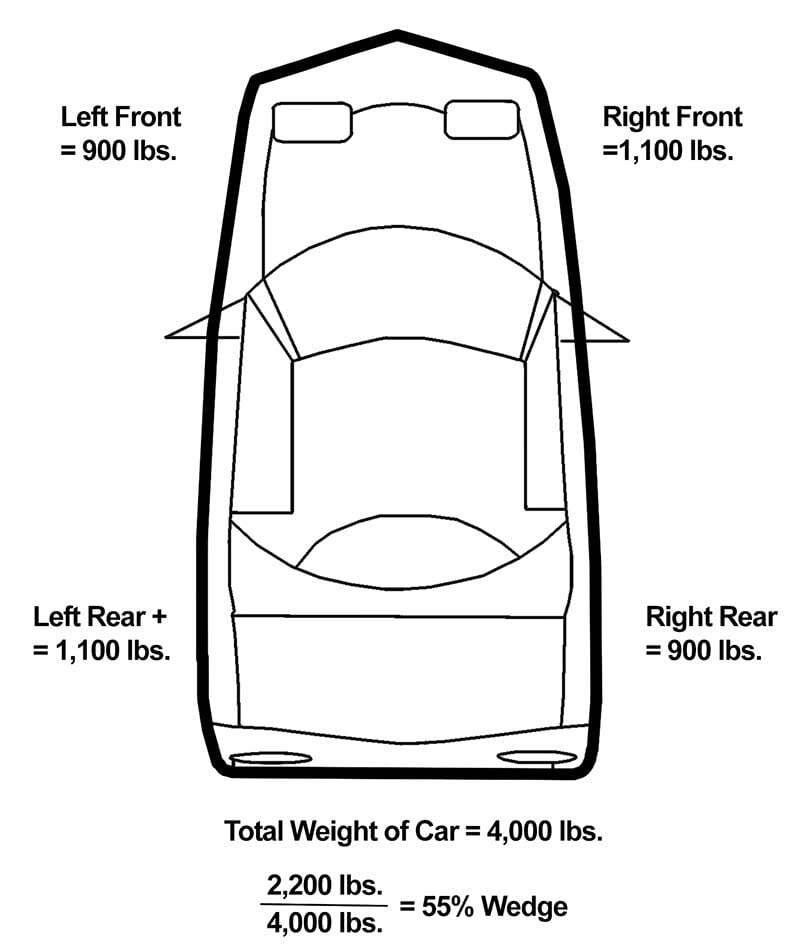 Keep in mind the reverse is not true of the right front or left rear because the torque placed on the body is twisting the car in one direction. If the car were to be raced in reverse, then we would worry about the right front and left rear wheels because the torque reaction would be in the other direction. But, luckily, nobody has started any such racing series. Basically, the wedge of the vehicle works with the torque of the driveline under acceleration; however, it does change the handling of the car going into turns under braking where there is no torque to twist the body, and this is why these cars understeer in corners. You or your driver must decide if wedge or reverse-wedge is helping you go faster.
Keep in mind the reverse is not true of the right front or left rear because the torque placed on the body is twisting the car in one direction. If the car were to be raced in reverse, then we would worry about the right front and left rear wheels because the torque reaction would be in the other direction. But, luckily, nobody has started any such racing series. Basically, the wedge of the vehicle works with the torque of the driveline under acceleration; however, it does change the handling of the car going into turns under braking where there is no torque to twist the body, and this is why these cars understeer in corners. You or your driver must decide if wedge or reverse-wedge is helping you go faster.
Wedge in a car helps acceleration, but the handling of the car will no longer be neutral. Since you have a greater weight load on the right front tire you can over load the traction limit and get a push in left-hand turns. Remember, in left-hand turns centrifugal forces transfer weight from the left side of the car to the right. In right-hand turns you will have more weight on the inside tire and as the car turns the centrifugal forces will transfer that weight away from the right side of the car to the left. Because of inertia, the weight transfer is always opposite the direction you are turning in.
There’s another very important point to consider when adding a wedge or reverse wedge to the car. This changes the ride height, and you want the ride height to be as low as you can get the car without bottoming out on bumps. If you add wedge, you are raising the ride height at one corner. To off-set this increase in ride height you should lower the overall ride height of the car. This adjustment will be relatively small compared to the wedge adjustment. Another point is that while making an adjustment to wedge you need to disconnect the sway bar. Obviously, the sway bar’s job is to transfer any suspension movement from one side of the car to the other to prevent body roll. This means that if you put wedge in the car you are going to have to install the sway bar under stress, and the sway bar is going to do its best to reverse the wedge you just put on the car. This is normal and to be expected. As we mentioned earlier, the weight transfer from cornering has to be factored in to any adjustment you want to make to the car. Raising or lowering your ride height has critical effects on cornering.
Track Width & Center of Gravity
Let’s look at the formula for weight transfer in a corner. This simple formula does not include the gravity factor (Gs) and is as follows:
Weight of car (in lbs) x Height of Center of Gravity (in inches) / Track Width (in inches)
Let’s say our 4,000 lbs. example has a track width of 50 inches and the center of gravity is 25 inches. This yields:
4000 lbs. x 25 in. (= 100,000) / 50 in. = 2,000 lbs. lateral weight transfer
This lateral weight transfer is from one side of the car to the other, on both axles. This means the front axle is going to have to handle 1000 lbs. and the rear axle has to handle the remaining 1000 lbs. in a corner. If we can increase the track width to 75 inches, the formula now looks like this:
4000 lbs. x 25 in. (= 100,000) / 75 in. = 1333.33 lbs. lateral weight transfer
This shows us why widening the track of a car reduces the lateral weight transfer that the outside tires have to handle. If we keep the track the same, but lower the center of gravity, the equation looks like this:
4000 lbs. x 20 in. (= 80,000) / 50 in. = 1,600 lbs. lateral weight transfer
This 1,600 lbs. of lateral weight transfer is still less than 2,000 lbs. of lateral weight transfer. Both of these equations illustrate how either widening the track width or lowering the center of gravity will lower the lateral weight transfer, giving the outside tires a lighter load to handle. This is why you want to run the widest track and the lowest ride height possible. Remember, these equations are only for illustration of the principles – “your handling may vary,†as they say about mpg.
If you knew the performance curve of your tires, you could calculate the actual lateral weight transfer in pounds and also calculate the Gs (gravity) that your car should theoretically be able to handle. In future installments in HRP, we will continue to illustrate your goals in setting up your car for your particular form of racing. We can all break the laws of our land, but you will never be able to break the universal laws of physics.
by Kerry Jonsson
Â

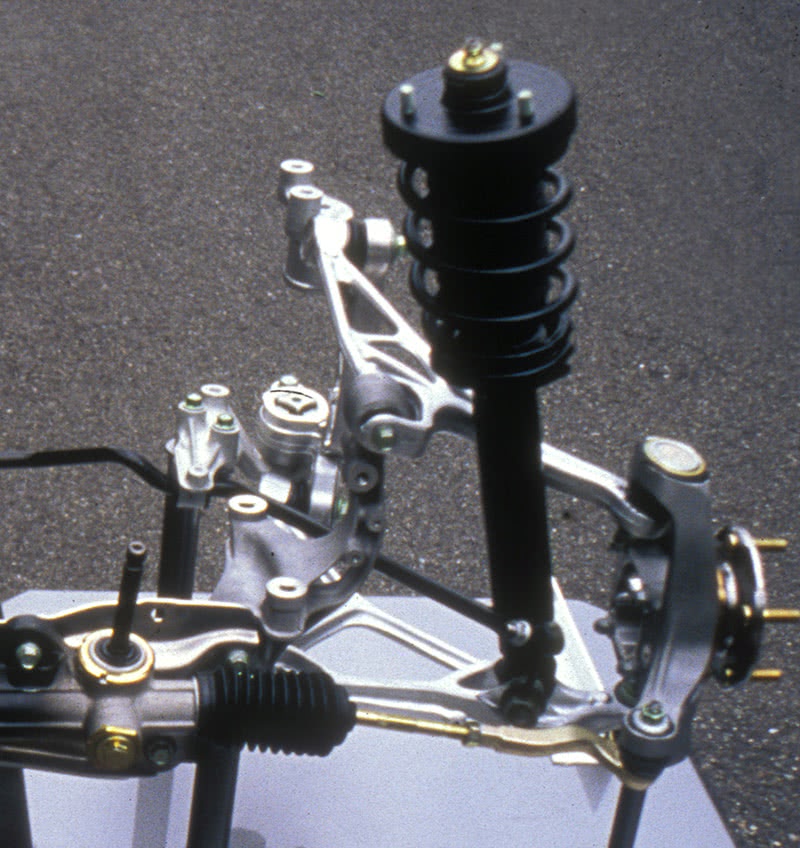
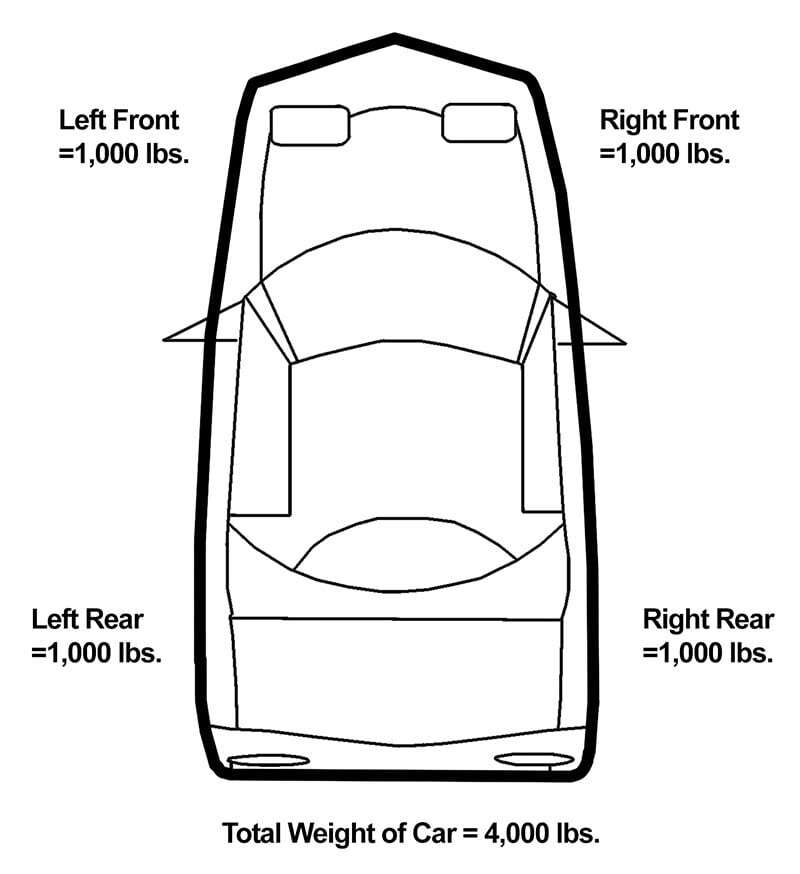
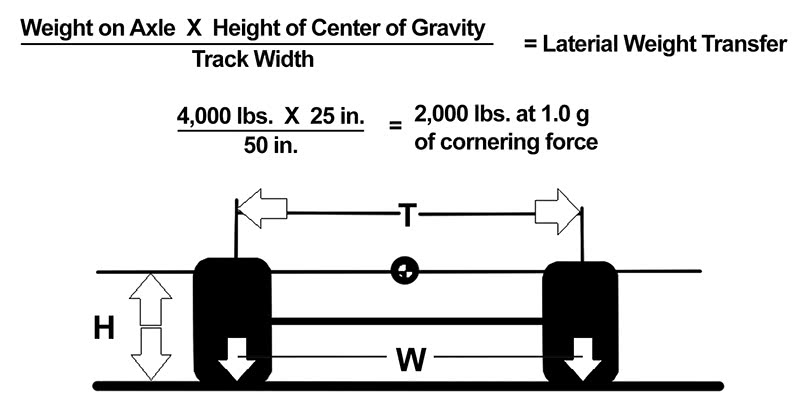
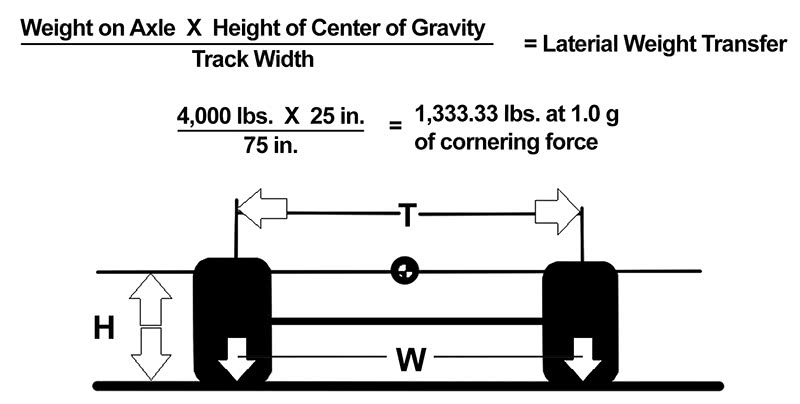
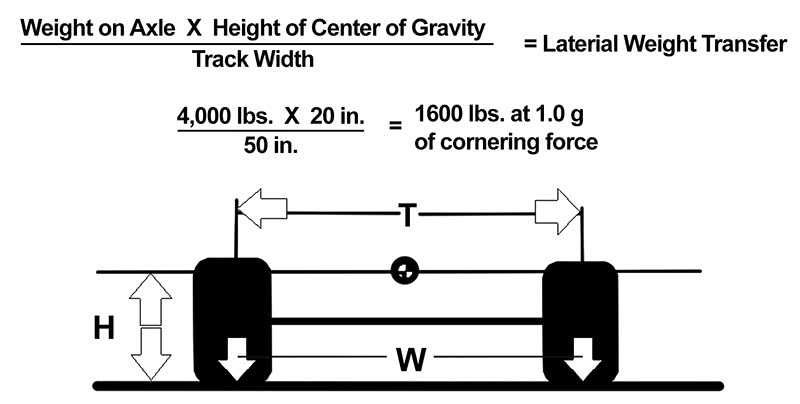


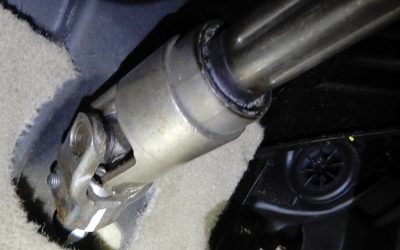
0 Comments